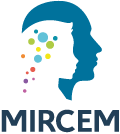List, inform
advise, propose
MACROPHAGE ACTIVATION SYNDROME
Macrophage activation syndrome (MAS) or hemophagocytic lymphohistiocytosis is a dysimmune disorder leading to an abnormality in the function of certain white blood cells such as CD8 and NK T lymphocytes. In most cases, the disease is revealed by a viral infection inducing an uncontrolled activation of these cells that are abundantly secreting inflammatory mediators responsible for the clinical symptoms.
Causes of disease
MAS may be
- primary, due to a genetic abnormality such as familial lymphohistiocytosis (FHL), Griscelli syndrome (GS), Chediak Higashi syndrome (CHS), lymphoproliferative X-linked syndrome
- secondary, caused by a viral infection such as Epstein-Barr virus (EBV), which is most often involved, or an inflammatory disease such as idiopathic juvenile arthritis or lupus.
Clinical manifestations
Central nervous system involvement was observed in most familial lymphohistiocytosis in the absence of treatment and in all children with Chediak Higashi despite treatment. Sometimes the neurological impairment may precede the general signs and a delayed diagnostic may be harmful for the child. In a recent observational study conducted by the center in collaboration with the hereditary immune deficiency reference center (CEREDIH), in 46 children with a genetic form of MAS, 29 (63%) had neurological impairment in addition to general clinical signs. In 3 children (7%), the neurological impairment was isolated. Among the most frequently observed neurological signs, seizures (35%) and alteration of consciousness (31%) are symptoms requiring a management in intensive care.
Evidence of the disease
In half of the children affected, CSF is abnormal: pleiocytosis (presence of many cells) and / or increased protein levels and / or haemophagocytosis (biologic marker of the disease) were observed and these abnormalities are more frequent in case of neurological impairment.
In contrast, 55% of children with clinical neurological signs had a normal initial MRI (within the first 6 months). This suggests that the pathophysiology of neurological impairment is related probably to the increase of inflammatory mediators (cytokines and chemokines) in the central nervous system before secondary infiltration of inflammatory cells. Initial MRI, when abnormal, had different characteristics from those seen in an ADEM: T2 hyperintense lesions are more frequently bilateral (67%), symmetrical (53%), periventricular (80%). The cerebellum is often affected (60%), unlike the central gray nucleus (20%) and the brainstem (13%). Lesions are often ranges (67%) poorly defined (93%).
Evolution
After a ± 3.6 years follow-up, 17 of 28 (61%) living children in our series had normal neurological examination, 5 (18%) had severe neurological involvement with tetraparesis and / or required third party help and 6 (21%) moderate cognitive difficulties allowing enrollment in a standard school. Abnormal neurological outcome is influenced neither by age nor by the type of genetic abnormality but by the presence of an initial neurological impairment, lesions in the initial MRI or pathological CSF.
Treatment
If neurological damage is suspected or confirmed, specific intrathecal treatment is given quickly. The most effective treatment is bone marrow transplantation, which allows very good recovery even on the neurological level.








